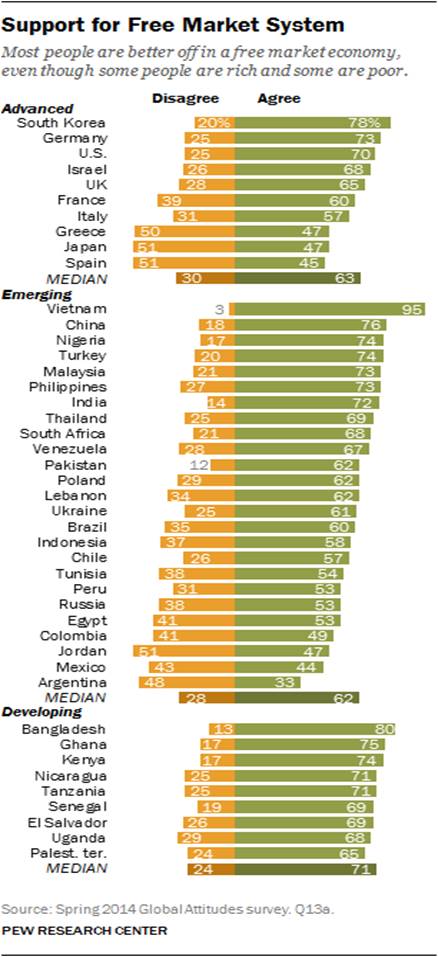"Many chains use a cost-plus approach. That is, prices are based on food costs plus a labor charge and an overhead factor. The problem with cost-plus pricing is that it is a short-term, inside-out approach. Not only does it leave you vulnerable to variability in commodities pricing, but it also doesn’t reflect the full margin potential of your offerings. Customers may be willing to pay more for some items, but cost-plus pricing essentially treats all products the same. Pricing should be decided from the outside in.
...
You should approach pricing as thoughtfully and strategically as your menu.
...
Reinforce your brand identity. Use price to communicate what your brand stands for.
...
Be clear about your competitive positioning. Don’t be afraid to charge more if you’re competing on quality, exclusivity, or a superior experience.
...
Vary price to emphasize brand differentiation and value. Variable pricing draws attention to the value you offer or to the one dimension that most meaningfully differentiates you from competitors.
...
Vary price to target customer segments.
...
Anchor your pricing. Price anchoring uses cues to set the customer’s expectations.
...
Pricing is too important to be made as an arbitrary decision. And just because consumers have cut back on spending doesn’t mean pricing is simply a game of “how low can you go.” With a strategic approach, you can use price as a helpful tool in your brand-building toolbox."
"1. Similarity Can Cost You Sales...
Sometimes marketing (and pricing) needs to help customers get the difference between products, because as it turns out, too many options can be demotivating to consumers.
...
if two similar items are priced the same, consumers are much less likely to buy one than if their prices are even slightly different.
...
2. Utilizing Price AnchoringWhat's the best way to sell a $2,000 watch? Right next to a $10,000 watch!
...
By placing premium products and services near standard options you can create a clear sense of value for potential customers, who will then view your less expensive options as a bargain in comparison.
.
3. The Secrets of Weber's Law...
the just noticeable difference between two stimuli is directly proportional to the magnitude of the stimuli.
...
4. Reduce Pain Points in the Sales ProcessAccording to neuroeconomics experts, the human brain is wired to "spend 'til it hurts."
...
Reframe the product's value.
...
Bundle commonly bought items.
...
Sweat the small stuff.
...
Appeal to utility or pleasure.
...
It's either free or it isn't.
...
5. Try Out an Old ClassicEnding prices with the number 9 is one of the oldest pricing methods in the book...
...
6. Emphasize Time Spent vs. Saved...
study shows that consumers tend to recall more positive memories of a product when they are asked to remember time spent with the product over the money they saved.
...
7. Never Compare Prices Without a Reason...
the act of comparative pricing can cause unintended effects in consumer evaluations if there is no context for why prices should be compared.
...
The focus should be on why prices are cheaper, not just that they are.
.
8. Utilize the Power of Context...
Where you buy is just as important as what you buy.
...
9. Test Different Levels of Pricing...
Some customers are always going to want the most expensive option, so adding a super-premium price will give them that option and will make your other prices look better by comparison.
.
10. Keep Prices Stupidly Simple"
"Let the consumer – not your competition – determine the value of your product and remember that it is much easier to lower your price after a product launch than it is to raise it down the line."
"no great companies can be all things to all people; you have to choose what sort of organization you are-- and exactly what value you're delivering. They divide the world in three: Are you primarily a product company? a customer-service driven operation? or an operationally efficient enterprise?
...
Until you decide what kind of company you are, you can't develop an effective pricing strategy. Product-oriented companies can command premium prices because they deliver truly distinctive goods and services. Customer-centric companies have to be middle-of-the pack in their pricing, though they can command a degree of a premium based on outstanding service. Companies grounded in operational efficiency present a value-based model, and so must price themselves below the midpoint. What are you? You can be some of all three. But you have to major on one."
- "A Penny Saved: Psychological Pricing"
- "19 Pricing Strategies for Your Business to Try"
- "The Psychology of Pricing: A Gigantic List of Strategies"













%2006.21.jpeg)












